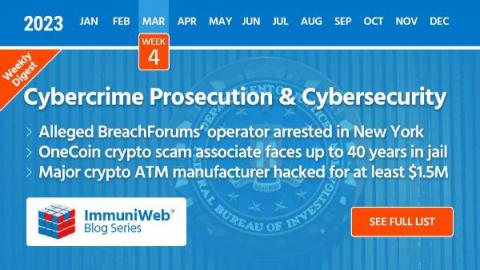Security | Threat Detection | Cyberattacks | DevSecOps | Compliance
Latest News
When seeking to understand the cyber threat landscape and respond to various incidents, one of the most important factors to consider is how threat actors are gaining access to networks.
CyRC Vulnerability Advisory: CVE-2023-25828 Authenticated Remote Code Execution in Pluck CMS
Synopsys Cybersecurity Research Center discovers new RCE vulnerability that can leave Pluck Content Management System vulnerable.
Production-safe DAST: Your secret weapon against threat actors
Production-safe DAST with WhiteHat Dynamic enables critical security scans in the software production environment. Software powers modern businesses, but these ever-evolving applications and systems can also include vulnerabilities that threat actors can exploit to disrupt, threaten, and steal critical data. But fear not: Robust security processes can mitigate most of these risks and ensure that new features and updates are properly tested.
The InfoStealer Lifecycle: A Look At The Attack Process From End-to-End
Malware is not a new attack vector but, over the past few years, the Cyberint research team was observed a resurgence of this threat. In particular, a specific type of malware known as InfoStealers has become a serious risk. This blog post will drill down on InfoStealers and discuss the lifecycle of an InfoStealer attack, from beginning to end.
Indent and Keeper: Time Limited and Permanent Password Access Available On-Demand
Last year, Keeper Security unveiled One-Time Share, a secure and convenient way for Keeper users to share credentials with anyone, including those that are not Keeper users. Since its launch, many of our customers have grown to rely on One-Time Share, including in cases where they need the ability to set time duration. As a result, we’ve made expanding the options for setting and modifying time-limited access a top priority.
Suspected Owner of BreachForums Data Breach Website Arrested in the US
Read also: Major crypto ATM manufacturer hacked, a phone scam gang that prayed on elderly Americans dismantled, and more.
Weekly Cyber Security News 23/03/2023
A selection of this week’s more interesting vulnerability disclosures and cyber security news. For a daily selection see our twitter feed at #ionCube24.
The SQL Injection Guide: Attacks, Types, Signs & Defense Against SQLi
Most dynamic web applications and sites — ones that store and process user information — use some sort of database implementation. One of the most common implementations involves SQL. Structured Query Language is a standard language for relational database management systems (RDBMS). It lets you query database records, change and modify them, set permissions, create custom views and storage procedures.
Zero Day Defined: Zero-Day Vulnerabilities, Exploits & Attacks
Zero-Day” is an intriguing concept in the domain of cybersecurity. Imagine diligently following security best practices such as patching exploits and updating the systems regularly. Plus, you’re following strict risk management and governance frameworks within the organization to vet new software applications for security risk before adding them to your library. But what happens when the security flaws are novel — and a patch does not exist?
Machine Learning in Security: Detecting Suspicious Processes Using Recurrent Neural Networks
Malicious software like ransomware often use tactics, techniques, and procedures such as copying malicious files to the local machine to propagate themselves across the network. A few years ago, the Cybersecurity and Infrastructure Security Agency, the Federal Bureau of Investigation, and the Department of Health and Human Services issued a joint cybersecurity advisory to ward off potential harm from threat actors for at-risk entities.










